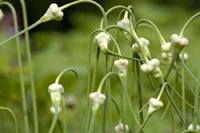Sustainable Gardening
Here is a checklist of some of the things that make up sustainable gardening
I. A sustainable gardener conserves water by:
- Mulching around plants
- Applying water only as needed according to soil conditions, plant age and type
- Using soaker hoses or drip irrigation
II. A sustainable gardener designs by:
- Clustering plants with similar needs together
- Placing the part of the garden requiring the most care closest to the house
- Taking advantage of microclimates
- Incorporating edible plants in the landscape
- Planting with wildlife in mind
III. A sustainable gardener attends to soil tilth by:
- Composting garden and household vegetable matter
- Protecting the soil from erosion
- Defining walkways and driveways to prevent compacting the soil
- Mulching by using readily available materials like straw, compost or gravel
- Revitalize soil with organic fertilizers and compost
IV. A sustainable gardener chooses plants that:
- Attract beneficial insects
- Are non-invasive (each county has invasive species lists)
- Are appropriate to the area’s climate like natives and their friends (or related ornamentals that blend with the surrounding landscape)
- Can be maintained with less use of power tools
- Are for texture and multi-season interest
- Are grown locally whenever possible
V. A sustainable garden conserves the gardener’s energy by:
- Using the leaves that fall as mulch on the beds
- Appreciating a plant’s natural form and planting the right size plant in the right place
- Understanding the role of insects in the garden
- Tolerating minor imperfections
- Using mulch to reduce weeding and prevent disease
- Returning plant pots to nurseries who will reuse them


